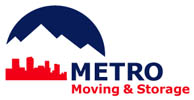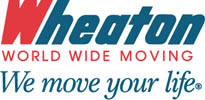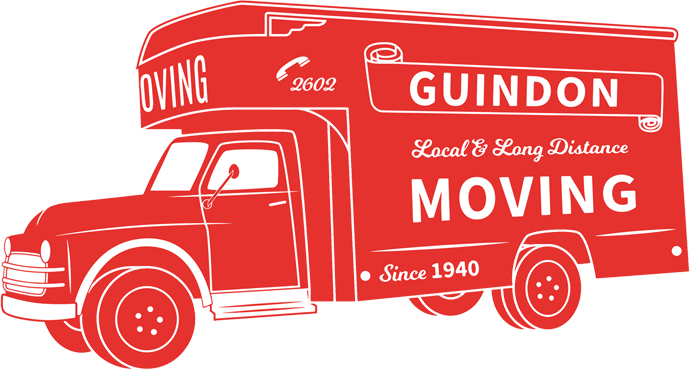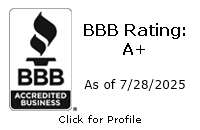Moving Company Keyword Research Guide
As a moving company, your goal should not be about just getting “traffic”, but getting “relevant traffic” to your website— Users that will actually interact with your content and convert to leads. How do you capture that traffic? With higher page rankings on Google for the right keywords. Here is where SEO comes into action.
The purpose of search engine optimization (SEO) is to make your website more visible in search results, driving users to your site and creating more opportunities to convert those visitors into customers. Part of this process is including the words and phrases that your potential customers are searching for in your content, making it more likely that Google will recognize and suggest you as an option in search results.

What are Keywords & Why Do They Matter?
“Keywords”, in simple terms, are the words and phrases that web users enter into a search engine to find businesses, information, and resources. For example, “moving companies near me,” “local movers,” “moving checklist,” and many more.
When someone enters a keyword into Google, it provides results based on relevance. To show in these searches, you are more likely to show higher in search results if you have included that keyword and similar variations in your content.
It may sound simple, but keywords can actually vary quite a bit in terms of search intent, traffic volume, length, and specificity. Knowing the difference between these keyword types and how they function is the first step to creating an effective moving company keyword strategy.
Types of Keywords
- Short-Tail Keywords are known as generic keywords and are the most popular, broadly searched terms with a high volume of search traffic. They are usually one or two words and are very competitive to rank for.
Example: moving services
- Mid-Tail keywords fall between short-tail keywords and long-tail keywords. These terms are usually two to three words. They are a little more descriptive than short-tail keywords.
Example: local moving services
- Long-Tail Keywords are the most extended search terms and are targeted to a specific topic or audience. They typically have low search traffic and less competition. These keywords generally have higher conversion rates than short-tail and mid-tail keywords.
Example: local moving services for seniors
All of these keywords have their unique strengths, and can multiply the results of your SEO efforts when used in the right situations. The key to knowing when to use each is understanding the behavior of potential customers online.
What is Search Intent?
Search intent is a user’s purpose for an online search. They may be searching for answers, a business, or a product or service. There are many possible intentions that someone could have when searching for a particular keyword. Google ranks pages based on their relevance to the keywords and estimated intent of a search, making it essential to match your content to the needs of your audience.
As SEMrush puts it, “Search intent (also called user intent and keyword intent) is important in SEO because understanding and aligning with it helps you create content that’s tailored to what your audience cares about and is more likely to rank in search results.”
Types of Search Intent
There are many types of search intent, so we have shortlisted the three most common and actionable:
- Transactional Intent: Transactional intent means a user has already made their decision, and they’re ready to purchase. These searches involve action words like “schedule”, “book”, and more, with direct references to the product or service they are looking for.
Example: “book a move online”
- Commercial Intent: One step behind transactional intent, people with commercial intent already know what they want to buy, but want to compare options before finalizing a sale. These searches are looking for information and often use words like “compare”, “best”, “review”, etc.
Example: “best local movers”
- Informational Intent: Searches with informational intent indicate that the user is looking to learn something or find information on a specific topic. These searches are often phrased as questions and use words like “what”, “how”, “where” and “why”.
Example: “how to pack a mirror”
Looking at the intent behind what people are searching for is the best way to identify what searches are most likely to convert and match them to the services you have to offer.
Localize For Your Market
Location is everything in the moving industry. Your potential customers aren’t searching for generic “moving companies”—they want “moving companies in Denver” or “Dallas local movers.”
Local SEO for movers is essential — It connects you with customers in your service area while reducing competition from national moving companies. When someone searches for moving services, they’re looking for companies that can actually serve their location.
Include your city, state, and surrounding areas in your keyword research. Consider different ways people refer to your location—formal names, nicknames, neighboring communities, and zip codes.
Example: If you serve San Francisco Bay Area, target:
- “San Francisco movers”
- “Bay Area moving company”
- “SF local movers”
- “movers near 94102”
Don’t forget service-specific local keywords like “piano movers in Chicago,” “apartment moving services Seattle,” or “office relocation Portland.” These capture highly targeted traffic with strong commercial intent.
Consider Seasonality
The moving industry sees many changes throughout the year. Peak season runs from late spring through early fall, with summer usually seeing the highest demand. Your keyword strategy should match these patterns.
Peak Season Strategy: Focus on high-volume, competitive keywords when search traffic increases. Competition is fierce, but so is opportunity.
Off-Season Strategy: Target long-tail keywords and create informational content. Many people plan moves months ahead, especially for long-distance or corporate relocations.
Create season-specific content around relevant keywords:
- “Summer moving tips”
- “Winter moving challenges”
- “Back-to-school moving services”
This approach captures seasonal traffic while building authority year-round.
Top 25 Keywords for Your Moving Company
We’ve combined over a decade of moving industry knowledge with the power of tools like Google Ads and SEMrush to bring you 25 essential keywords for your SEO strategy. These are a great starting point for any moving company just dipping their toes into keyword strategy, with a healthy variety of intents, low to medium competition, and covering a range of key moving services and topics. They are a must for all moving companies.
- movers near me
- local movers
- long-distance movers
- international movers
- family owned moving company
- commercial movers
- apartment mover
- movers with insurance
- affordable moving company in [your city]
- moving and storage companies
- moving labor
- long distance moving tips
- moving quote
- office movers
- reliable moving companies
- residential movers
- moving storage
- same day movers
- senior movers
- white glove moving services
- movers in [your city]
- what do I need for an international move
- military movers
- how to pack dishes
- what to look for in a moving company
Best Practices for Keyword Strategy
Finding the right keywords for your audience is only half the battle. Building an effective keyword strategy requires you to use them with purpose and reason. Here are some guidelines to keep you on track for success:
Quality Over Quantity: Focus on fewer, highly relevant keywords rather than a bunch of random terms. Better to rank well for 20 strategic keywords than poorly for 200.
Natural Integration: Include keywords naturally in your content. Avoid cramming as many keywords as possible into your content — Google will flag it, and viewers will be put off. Create valuable content that naturally works target keywords into titles, headings, and body text.
Monitor and Adjust: Track your rankings, traffic, and conversions regularly. Use Google Analytics and Search Console to identify what’s working and spot new opportunities.
Content-First Approach: Let keywords support your content strategy, not drive it entirely. Create genuinely helpful content—moving tips, checklists, service information—then optimize for relevant keywords.
The most successful moving companies use keyword research as a foundation for helpful content that meets customer needs and puts them at the top of search results.
Conclusion
The right keyword strategy can transform your moving company’s online presence. When you target the keywords your customers are actually searching for, you attract visitors who are genuinely interested in your services. Start providing valuable content that meets user needs, and watch as traffic turns into leads.
Want to see where your website stands today? Our free SEO audit reveals exactly which high-value keywords you’re missing and shows you the quickest wins to boost your search rankings and drive more qualified leads.










